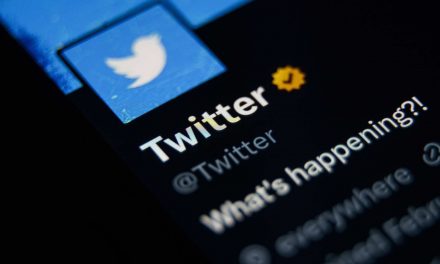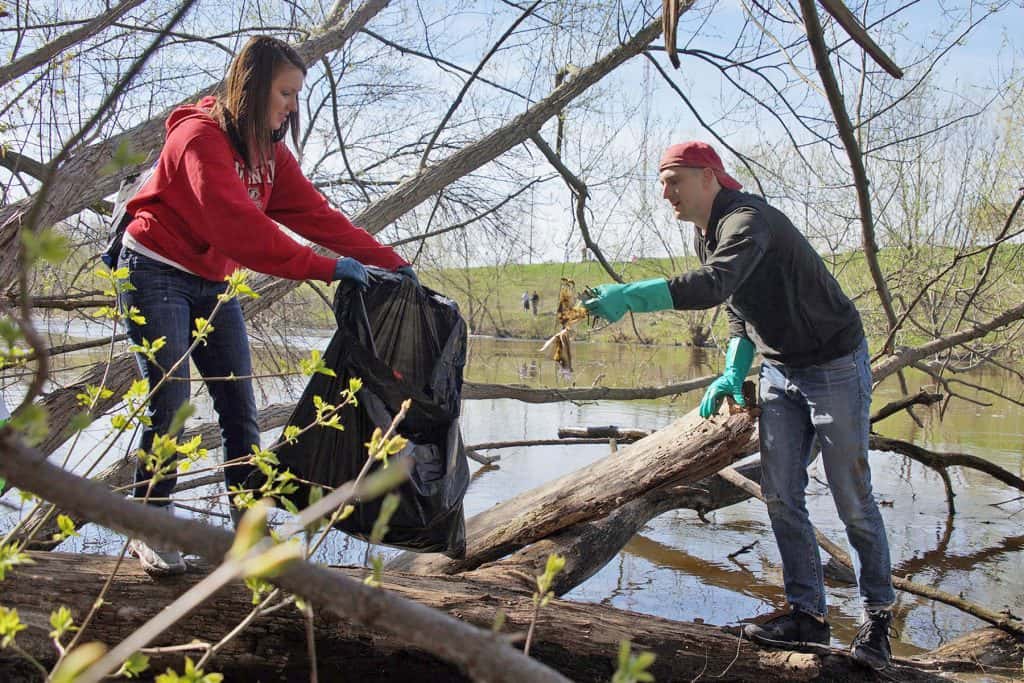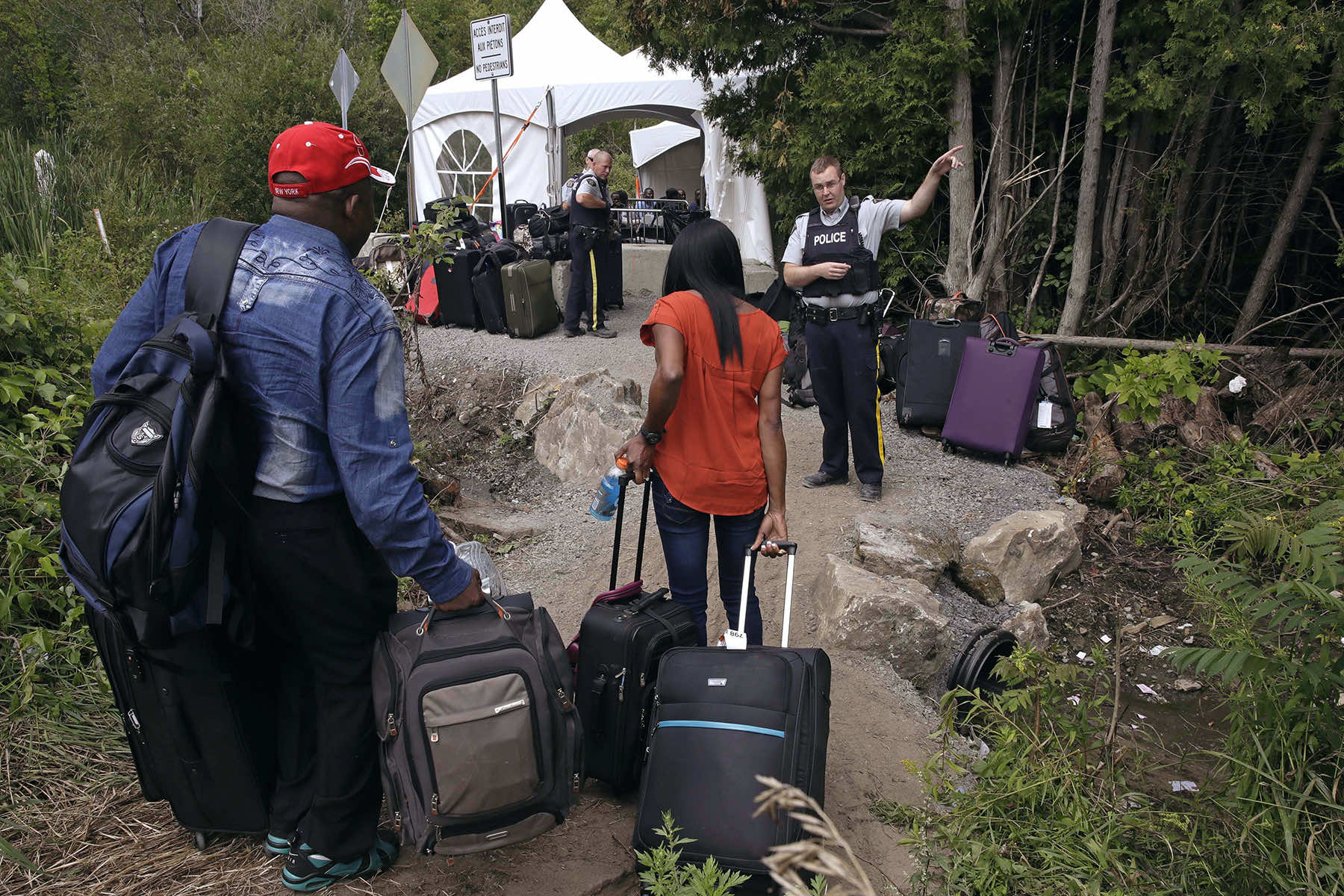
Pedro Meraz said that living in Colima, Mexico, was like living in a war zone, with shootings, burning cars and dismembered bodies being left outside of schools.
When his wife Rocio Gonzalez, a 28-year-old lawyer who worked with abused women, began receiving death threats from a cartel and the local authorities ignored her pleas for assistance, they knew they had to leave.
“They knew where we lived and what car we drove,” said Meraz, 41, who taught at The University of Colima, near the Pacific Coast and about 300 miles (485 kilometers) west of Mexico City. “Feeling that you are going to lose your life, or one of your daughters, I don’t mind starting from scratch.”
The family is part of a surge in the number of Mexicans who have requested asylum in Canada this year. Due to the relative ease of obtaining asylum in Canada compared to the U.S., visa-free travel between Mexico and Canada, and the threat of violence back home, more than 8,000 Mexican nationals have sought refugee status in 2022.
That is almost five times as many as last year and more than twice as many as in 2019, the last year before the COVID-19 pandemic and the travel restrictions that accompanied it. The vast majority of them are flying in to Montreal, which has many direct flights to and from Mexico.
Among them is Viviana Tapia Gonzalez, a human rights activist and mother of four from Aguascalientes, about 265 miles northwest of Mexico City, who said she left Mexico in January after being attacked by the military. She said her work with the families of missing and murdered women and girls made her a target.
“Death threats were constant,” she said. “I thought it was the last option I had to be safe. I work for many causes and help many people. I did not want to stop helping, but I must also protect (and) take care of myself.”
Tapia Gonzalez has been living in a Montreal women’s shelter while awaiting a decision on her asylum claim, which she fears might get rejected. If her claim is turned down, she would not be alone.
In the first nine months of 2022, the Immigration and Refugee Board of Canada, an independent tribunal that investigates and decides asylum cases, finalized more than 2,700 claims by Mexican asylum seekers. Of those, 1,032 were accepted – 1,256 were rejected, and the remaining 400-plus were either abandoned, withdrawn, or had other outcomes, said Christian Tessier, an IRB spokesperson.
In Canada, claimants must meet the United Nations’ definition of a “convention refugee,” meaning they are outside of their home countries and have a well-founded fear that they would be persecuted if they returned based on their race, religion, political opinions, nationality or affiliation with a social group. Otherwise, they must prove that they need protection and can’t safely return to their home countries without risking torture, cruel or unusual punishment, or death.
Despite the risk of rejection, though, the surge in Mexicans seeking refugee status in Canada persists.
The Welcome Collective, a Montreal-based charitable organization that provides essential goods to new asylum seekers, said half of the group’s current clients came from Mexico — a 300% increase compared with earlier this year.
“They had to run away because of violence and other humanitarian reasons. To find a better place for their children,” said Flavia Leiva, the group’s volunteer and social outreach coordinator.
As for what is causing the increase in applicants, Leiva suggested that social media is playing a role.
“There have been YouTubers and some videos on TikTok talking about how easy it is to come to Canada,” she said.
At least one YouTube video that was published 10 months ago and made for a Mexican audience explains the Canadian immigration process in Spanish and has more than 4 million views.
It has been harder for Mexicans to seek asylum in the U.S. since the start of the pandemic. A U.S. public health rule that suspends the right to seek asylum on the grounds of preventing the spread of COVID-19 has fallen disproportionately hard on Mexicans. Title 42 authority has been used to expel migrants more than 2.4 million times since it was introduced in March 2020.
Further adding to Canada’s allure is that Mexicans have not needed a visa to travel to the country since the Canadian government lifted the requirement in late 2016.
Leiva also suggested that more Mexicans might be choosing to come to Canada instead of the United States because they think it’s safer.
“In the U.S., they are put in cages, the conditions are not as good,” Leiva said. “People do not feel safe or protected.”
Meraz said he and his family decided that Canada would offer them the best chance to start over.
“My wife investigated the existence of international treaties to protect people who are at risk,” he said.
He referenced Canadian policies and regulations protecting women and children in addition to the country’s comparatively low crime rate.
“The U.S. was never in our minds, since there is a lot of violence … attacks where many innocent people die,” said Meraz. “Canada, statistically, has a very low rate of violence and its quality of life is much better than the USA.”
He said his family chose Montreal instead of some other Canadian city because of logistics, though he’s having second thoughts.
“If you were to ask me right now if I would choose another place, then maybe,” said Meraz, noting that he and his family must now learn French.
Hayet Mohammed, who manages the French language program at Carrefour Solidarité Anjou, a nonprofit that helps newcomers settle in Quebec, said not only is obtaining refugee status easier in Canada, but there are plenty of resources for asylum seekers once they arrive.
“They can work as soon as they have their refugee status and are entitled to (French) courses given by the (Ministry of Immigration in Quebec) which gives them financial assistance and finally, there are many work opportunities, and they are not at risk of finding themselves unemployed,” said Mohammed.
“Being a newcomer myself with my little family, there is no other country that gives immigrants so many facilities in terms of training, work and child benefits. All these things make people leave their countries of origin and come to make their lives here, thousands of miles away from their families,” she said.

